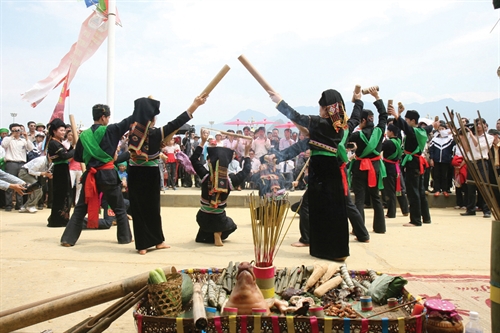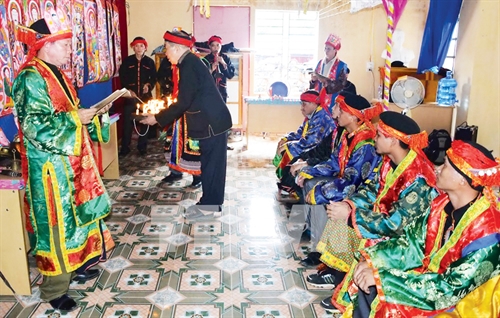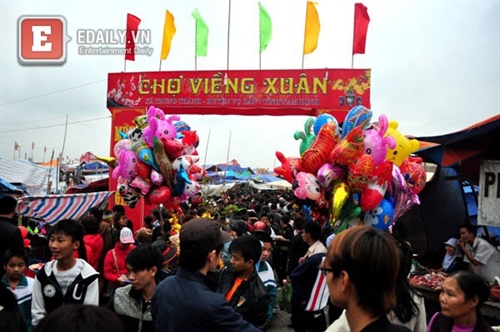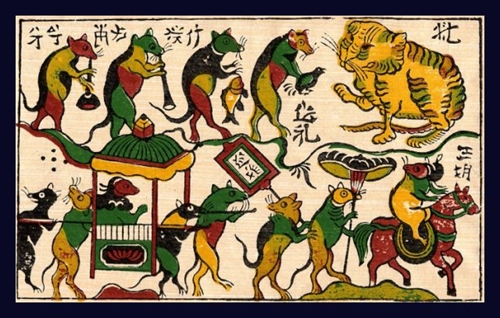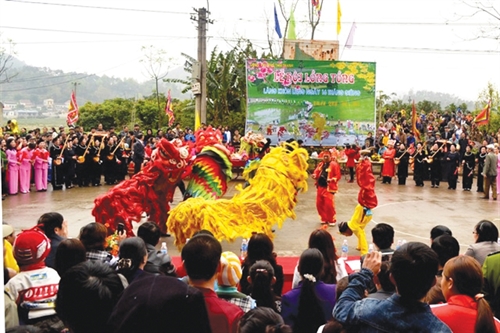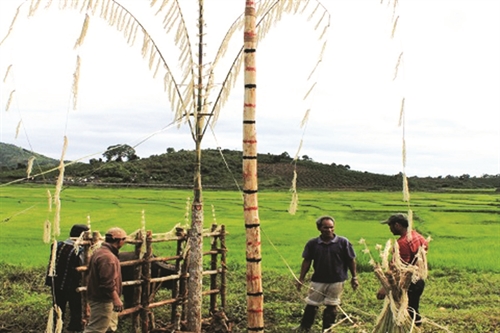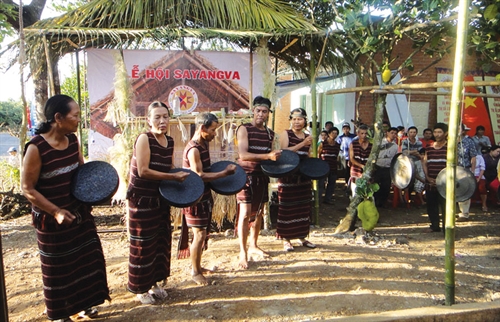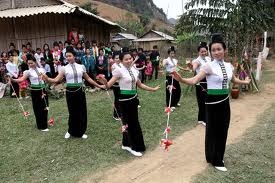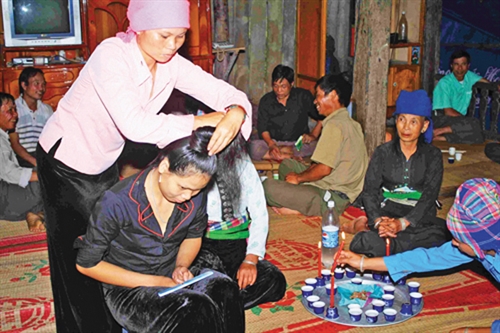Ta Thi Tam
Ethnology Institute
The Ta Oi, a Mon-Khmer language ethnic group with a population of nearly 35,000 living mainly in the mountainous areas of the central provinces of Thua Thien-Hue and Quang Tri, has adopted many customary laws related to forests.
The group classifies forests into two types: spiritual forests and forests for exploitation, which are the common property of the community. Ta Oi villagers may use and exploit to a certain extent natural resources in forests for exploitation, but not in spiritual forests.
Spiritual forests are sub-divided into headwater, holy and ghost forests.
A headwater forest is a common property of many villages. Located in the upper reaches of rivers and streams, this forest is home to many secular trees. It is believed to be the shelter of many deities.
A holy forest is where dead people are buried, people committed suicide, hunters were mauled by beasts or killed by felling trees or passersby were missing. These people have become ghosts to protect the animals and trees here.
A ghost forest is home to banyan, mango and rambutan trees. It is also where dead people are buried. To protect the forest, Ta Oi people have made legends about trees and animals in the forest and no one dares to set foot in.
Located near villages, production forests are home to small animals, reptiles and birds and scattered, low trees. In these forests, Ta Oi people clear land for cultivation and animal raising, build rice and maize storehouses and develop gardens.
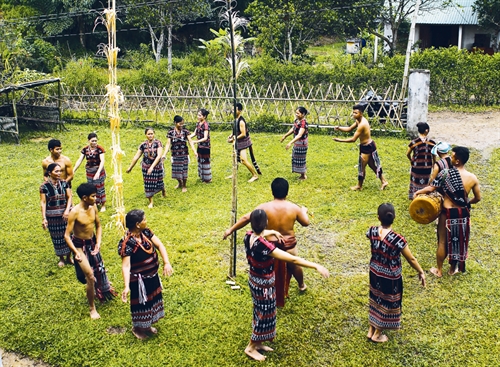 |
| Ta Oi villagers in A Ngo commune, A Luoi district, Thua Thien - Hue province act out worshiping rituals in a home-warming ceremony__Photo: Ho Cau/VNA |
Customary laws related to forest ownership
For Ta Oi people, each forest has its owner whose ownership is passed down from generation to generation. Many Ta Oi families who want to have forest land for cultivation will marry their daughters to the forest owners’ sons or even give their sons to the forest owners. In addition, they organize a ceremony to offer their most valuable objects such as a buffalo, copper pots and jars to the forest, river and stream deities.
Outsiders who have marital relations with villagers or have resided for a long time in the village will have the same rights to own forests like other villagers. Villagers who are expelled from the village for committing serious crimes are deprived of forest ownership.
For forests belonging to many villages, it is prohibited to clear land for cultivation, cut trees wantonly or hunt on a large scale in these forests. But members of these villages can freely gather firewood, mushrooms, bamboo shoots, wild fruits, vegetables and honey and catch fish.
Ta Oi village patriarchs are responsible for telling their villagers the boundaries of the forests as well as the boundary between their villages and the others based on such landmarks as a stream, a footpath, a hill or a secular tree.
Whenever there is a forest land dispute or violation, a village patriarch will represent the village to settle the dispute and penalize the violation.
The Ta Oi group has three types of ownership over holy forests.
Holy forests come under the common ownership of the entire region consisting of five or more villages. In these forests, it is also prohibited to clear land for cultivation or say vulgar words but it is allowed to hunt or exploit non-timber products.
There are also holy forests belonging to three villages. Here, people are not allowed to clear land for cultivation, hunt animals, gather bamboo shoots and mushrooms, and break trees, even a tiny branch. Violators will face a heavy fine which may be a buffalo or cow.
A large ritual will be held in the forest when villagers catch a tiger or two villages have a friction that needs conciliation. The offerings to the forest genie include pigs, chicken, glutinous rice and hunted animal meat.
A holy forest may belong to one village. Since this forest is believed to be the shelter of ghosts, villagers hold an offering ritual every year to pray for the forest genies’ protection. Hunting, exploitation, tree breaking or defecation is completely prohibited in the forest.
Customary laws related to forest exploitation
For headwater forests, Ta Oi customary laws only allow timber logging in the name of the village collective for a common purpose or work, such as erecting a buffalo stabbing pole, building a Rong communal house or making a village or graveyard gate. And such work must be discussed and approved by members of the villages co-owning the forest. In the morning of the logging day, an offering ceremony dedicated to the forest deity will be held. The offerings must include a buffalo, a goat, a pig, a jar of liquor, ten bamboo cylinders filled with glutinous rice, a string of grilled fish and a chicken.
For a headwater forest bordering several villages, the villages hold an offering ritual every three years at a time agreed upon among them. Each village contributes a white goat, a black goat, a white buffalo, a black buffalo, a white pig, a black pig, liquor, glutinous rice, grilled fish and sticky rice cakes to the ritual. A village that is populous and has to borrow land from its neighbor village for cultivation will have to double its contribution. The ritual is held by the forest in the center of these villages. A three-layer bamboo altar is set up and decorated with maize flowers, rice-ears, bamboo trees, sugarcane, guava trees and palm leaves. Goat and buffalo meat is placed on the lowest layer of the altar while pork is put on the second layer and chicken, wine, rice and water on the top. Village patriarchs are also ritual masters of whom the eldest will pray first and the youngest pray last. After the ritual finishes, villagers will share the offerings together.
The Ta Oi customary laws allow villagers to log timber in the headwater forest to build boats. If they use their logged timber for other purposes, such selling or exchanging it, they will be severely punished. They also have to organize a ritual to ask for the forest genie’s forgiveness.
For forests where exploitation and production are permitted, Ta Oi people can clear land for cultivation, log timber and hunt animals but under the village patriarch’s management. While exploiting forest resources, every villager must have the sense of protecting them and respecting others’ exploitation rights.
The group also has specific customary laws for determining ownership of hunted animals or forest products. A forest goer has the right to his gathered forest products such as honey, wild fruits and vegetables. However, the products gathered or hunted by a group must be shared equally among its members.
A forest goer can sell, exchange or give his hunted animals to other villagers, even outsiders. However, he has to share his hunted animals to his village if he uses his village tools for hunting; otherwise he will not be allowed to join the village’s hunting teams. If his target animal is wounded and runs into another villager’s field or another village, he has to report it to such villager or the patriarch of such village and share the hunted animal if it is found. If there is a dispute, the blood of the hunted animal will be traced as evidence. In case the hunter knows that the neighboring village keeps his hunted animal, he will report it to his village patriarch who is entitled to ask the former to pay a fine including a pig, a chicken and betel leaves and areca nuts. If the neighboring villager keeps the hunted animal for his family without sharing it to other villagers, he will have to pay a fine being a pig or a chicken to the hunter, depending on whether the hunted animal is big or small.
Ta Oi people also have many customary laws on forest protection, which impose heavy fines on acts of destroying forests and cutting secular trees.
With the above customary laws, the Ta Oi has successfully protected their forests and enhanced their community bonds.-
